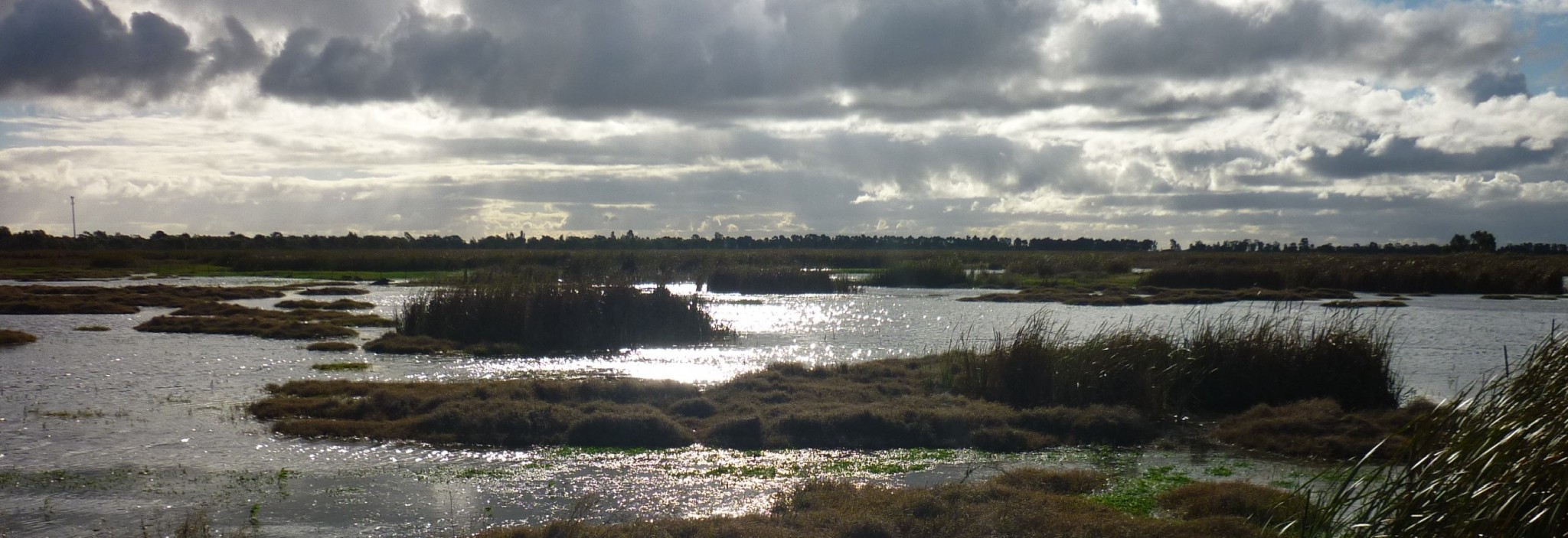Fivebough Wetlands contains both permanent and intermittent fresh-brackish shallow wetlands, which creates a seasonal habitat mosaic to accommodate breeding and visiting birdlife and the flora and fauna species which support them. The water basin at Fivebough ranges in depth from 0.4m to 0.6m and is monitored regularly and calibrated monthly by Ventia, to check water depth, temperature and quality, such as pH and Electrical Conductivity (EC). This testing ensures any contamination events or potentially harmful water attributes can be responded to in a timely manner.
Leeton Shire Council (LSC) contributes daily water releases from the adjoining Sewerage Treatment Plant (approximately 2.5 ML) under environmental protection licence. This water is constantly monitored by Environmental Protection Authority (EPA) for quality and volume, to ensure inputs to the reserve meet attribute standards for release.
Office of Environment & Heritage (OEH) also allocate ‘environmental flow’ water to Fivebough & Tuckerbil Wetlands, providing several scheduled releases at key intervals throughout the year which support the wildlife visiting or inhabiting the reserve. OEH provide specialist advice on the volume, timing and distribution of water throughout the wetlands, as well as considerations for water management in project works and maintenance of the reserve.
Murrumbidgee Irrigation (MI) delivers the ‘environmental flow’ water to the wetlands through the provision and maintenance of the irrigation network, including channels and regulators, connecting to and within the wetlands. MI also release regular minor volumes of water as over-flow into Fivebough & Tuckerbil Wetlands which contributes to a consistent presence of water in the reserve for the native species which require permanent wetland habitat.
A system of internal pipes and culverts within Fivebough Wetlands enables the Department of Industry – Lands to regulate water delivery into the site and between water basin areas, as required according to rainfall volume.
In times of localised flood risk, Fivebough & Tuckerbil Wetlands provide a sump option for excess water to be directed into, to mitigate inundation of townships and residential areas. As the wetlands are naturally cyclical between wet and dry conditions, such flood events are within the scope of conditions such ecosystems can expect to experience. The wetlands are able to contain significant amounts of re-directed excess water, however, because these wetlands act as drainage reserve there is no inherent drainage system for water to leave the reserve. Therefore, the drying cycle of the wetlands is wholly reliant on evaporation, which takes considerable time to see a reduction in water levels. Unfortunately, this means that following high rainfall events or flood diversion, the walking tracks and visitor areas of Fivebough Wetlands may not be accessible to the public for extended periods of time – perhaps just something to remember next time the tracks are inconveniently closed for visitors, that the reserve is helping to protect Leeton and surrounding townships from flood!

